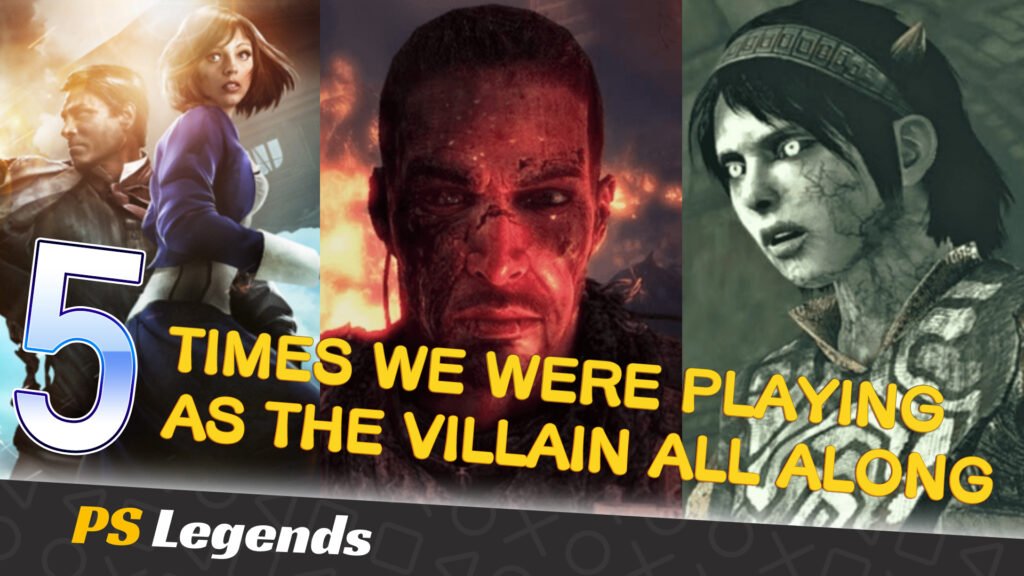Men wanted her. Women wanted to be her. PlayStation knew she was amazing straight away and claimed exclusivity as often as they could. Lara Croft defined a generation. She was a representative of a 90s feminist movement, a gender-swapped Indiana Jones for a new generation of gamers, and the face of one of the greatest gaming franchises of all time. Time to reacquaint ourselves with the original Lara Croft.
Conception
Core Design created Lara Croft as the lead protagonist of its Tomb Raider franchise, which began development in 1993. Lead graphic artist Toby Gard went through about five designs before arriving at the character’s final appearance. He initially envisioned a male lead character with a familiar whip and hat. Core Design co-founder Jeremy Smith characterised Gard’s initial design as derivative of Indiana Jones and asked for more originality. Gard decided that a female character would work better from a modern design standpoint.
Gard cited Virtua Fighter as an influence; While watching people play the game, most male players selected character Sarah Bryant in almost every match he saw. Gard expressed a desire to counter stereotypical female characters, which he has characterised as “bimbos” or “dominatrix” types. Smith was sceptical of a female lead at first because few contemporary games featured them. He came to regard a female lead as a great hook and put faith in Gard’s idea. This would also coincide with the rising ‘Girl Power’ feminist movement which was prominent throughout the UK and USA at the time.
Inspired by pop artist Neneh Cherry and comic book character Tank Girl, Gard experimented with different designs. He initially settled on a tough South American woman with a braid named Laura Cruz. Eidos management preferred a more UK and USA friendly name, as the name ‘Laura’ is especially rare in the USA and difficult to pronounce correctly with an American accent, while the name ‘Cruz’ would clash with a character who was becoming rapidly more British in design.
Eventually, ‘Lara Croft’ was selected from similar-sounding British names found in an English telephone directory in Derby, where the Core Design developers were based. An alternate explanation is a homage to an accountant named Laura Croft who the design team were familiar with. Along with the name change, the character’s backstory was altered to incorporate a fully British origin.

Story: From Lady To Legend
Lara Croft, daughter of Lord Henshingly Croft, was raised to be an aristocrat from birth. After leaving finishing-school at the age of 21, Lara’s marriage into even greater wealth seemed assured, but on her way home from a skiing trip, her chartered plane crashed deep in the heart of the Himalayas. The only survivor, Lara learned how to depend on her wits to stay alive in hostile conditions in a world away from her sheltered upbringing.
Two weeks later, when she walked into the village of Tokakeriby, her experience had a profound effect on her. Unable to stand the claustrophobic, suffocating atmosphere of upper-class British society, she realised that she was only truly alive when she was travelling alone. Over the following eight years, Lara rediscovered her previous interest in archaeology and acquired an intimate knowledge of ancient civilisations across the globe.
Her parents disowned their prodigal daughter, however Lara inherited the Croft Manor from her elderly aunt following her death, converting the ground floor into an elaborate gym. Lara turned to writing travel guides and archaeological textbooks to fund her trips. Famed for discovering several ancient sites of profound archaeological interest, Lara made a name for herself by publishing travel books and detailed journals of her exploits.

Lara’s expeditions have led her to search for some of the most powerful and dangerous artifacts in the world as well as uncovering some of the most mysterious places in Earth’s history. Lara’s exploits are legendary, even garnering a reputation, though occasionally that reputation is less than flattering. While some consider her a heroic adventurer, there are others who regard her as a cold-blooded killer who seems to operate outside the law.
Lara is often in a race against time with those who seek the same relics she does for nefarious intentions. Lara has thwarted many groups and individuals who are incredibly well equipped or powerful, including crazed religious cults, mad scientists and even gods. Lara will often lock up some of the more powerful relics in her manor, in order to keep them out of anyone’s hands but her own and if the situation requires it, she may even destroy the artifact if need be.
Lara Croft first appeared in the 1996 video game, Tomb Raider, in which she competes against mercenaries in search of an Atlantean artifact. Tomb Raider II (1997) centres on the search for the Dagger of Xian, which is sought by thieves. Tomb Raider III (1998) focuses on meteorite fragments that endow humans with supernatural powers. Both Tomb Raider II and Tomb Raider III would release exclusively on PlayStation.
In Tomb Raider: The Last Revelation (1999), the first depiction of a young Lara Croft, she is accompanied by her mentor, Werner Von Croy. Lara searches for artifacts associated with the Egyptian god Horus. In Tomb Raider: Chronicles (2000), most of the game relates older adventures told via flashbacks. Tomb Raider: The Angel of Darkness (2003) was the final game featuring the first generation Lara Croft and would release exclusively on PlayStation 2.

Relationships
While more social in later incarnations, the original Lara Croft would live a largely isolated existence, preferring her own company to that of others. She has a strained relationship with her family, and would make any excuse to avoid their company. Lara’s father, Lord Henshingly Croft, is a wealthy British aristocrat and husband of Lara’s mother, Lady Croft.
When Lord and Lady Croft were concerned about their daughter’s activities, they considered sending Lara to live with her eccentric aunt, a local school teacher, to be educated in European history. Not only would she broaden her horizons via travel, but she would benefit from a first-hand experience of Europe’s main sites of historical interest. Lara however, did not want to spend time with her stuffy aunt, and came up with a plan to join Werner Von Croy’s expedition in Cambodia.
The Crofts originally saw little issue with Lara educating herself in archaeology through travel, however this would become a problem when Lara would neglect her duties as a Countess. Prior to this, Lord Croft supplied famed archaeologist Werner Von Croy with the finances for his expedition to Cambodia with the condition that Lara was permitted to travel with him. Lara and Werner would forge a strong bond through their perilous adventure together.
After a plane crash years later, Lara became an adventurer, refusing to marry the Earl of Farringdon as Lord and Lady Croft had hoped. For this, the Crofts would disown her, however Lara would be provided for as she would inherit Croft Manor upon her aunt’s sudden passing. The Croft’s butler Winston would support Lara at the manor. Lara’s parents would travel the world frequently, leaving Winston behind. Winston would care for Lara instead, becoming like a father to her.

Legacy
Lara Croft’s 1996 debut is often cited as a catalyst for more female leads in video games. Several publications have used her as the standard to which later female video game characters have been compared, and labelled Lara a video game and cultural icon. Computer and Video Games commented that Croft’s appearance on the cover of The Face signalled a change in the perception of video games from “geeky” to mainstream.
The character is honoured in the English city of Derby, previous home to Core Design. In 2007, Radleigh Homes placed a blue plaque for Croft at the site of Core Design’s former offices, now a block of flats. The Derby City Council opened a public vote in 2009 to name its new ring road. The winning choice, with 89% of votes, was ‘Lara Croft Way’, which later opened in July 2010. In 2020, Croft appeared on four commemorative UK postage stamps issued by the Royal Mail to celebrate classic UK video games. A 2024 poll conducted by BAFTA with around 4,000 respondents named Lara Croft as the most iconic video game character of all time.
Lara Croft has become a sex symbol for video games, despite Toby Gard’s intentions for her to be sexy “only because of her power”. Time magazine’s Kristina Dell considered her the first sex symbol of video games, while others stated that Croft is among the first video game icons to be accepted as a mainstream sex symbol. Several publications listed Lara’s large breasts as one of her most famous attributes. Croft has appeared in several issues of Play’s ‘Girls of Gaming’ special and PlayStation Magazine’s ‘Swimsuit’ special.
After Tomb Raider: The Angel of Darkness (2003), Eidos rebooted the series with Tomb Raider: Legend (2006), which focuses on Lara’s search for Excalibur and her mother, altering the character’s backstory considerably as part of the redesign. Tomb Raider: Anniversary (2007), a remake of the first game in the series, carried over the narrative changes from Legend. Tomb Raider: Underworld (2008) continues the plot introduced in Legend. In 2013, the series would be rebooted for the second time.



